- Home
- John Updike
Higher Gossip Page 26
Higher Gossip Read online
Page 26
His sympathetic caress touched the match to the pent-up powder keg of my emotions, and immediately I was in the grasp of violent hysterics. It seemed as I listened to the high-pitched wails and wild laughter that came from my heart that the screams came from another person entirely.
She was no stranger to out-of-body sensations. Earlier that year, en route to China, she had been unexpectedly called upon to preach in Royal Albert Hall, and, as she described it, her hour of impressive oratory came entirely from her subconscious, like speaking in tongues, only the tongue this time was English. Throughout the pressure-laden decades of her success, she suffered lapses of discipline and nervous breakdowns that led to extended periods of seclusion. She was a woman on the edge, and fascinating as such.
Though her recoil from Darwinism into Pentecostal doctrine, as presented by a love object, and “good old-fashioned fundamentalism” could be said to be regressive, Sutton’s biography finds much that was progressive and liberal in her social programs at the Angelus Temple. In 1927, she established a temple commissary that, as the Depression settled in, emerged as “one of the region’s most effective and inclusive welfare institutions.” According to Epstein:
When the schools stopped feeding children free lunches, Aimee took over the program. When city welfare agencies staggered under the load of beggars, the women of Angelus Temple sewed quilts and baked loaves of bread by the thousands. When bread lines stretched for city blocks … Angelus Temple was the only place anyone could get a meal, clothing, and blankets, no questions asked.
She brushed aside the distinction between the “deserving” and the “undeserving” poor, and that between legal and illegal residents. One Mexican, the actor Anthony Quinn, who as a teen-ager acted as a translator for her, told an interviewer, “During the Depression … the one human being that never asked you what your nationality was, what you believed in and so forth, was Aimee Semple McPherson. All you had to do was pick up the phone and say, ‘I’m hungry,’ and within an hour there’d be a food basket there for you.… She literally kept most of that Mexican community … alive.” In an era when anti-black racism was freely expressed, not least loudly by fundamentalist white Protestants, she persistently tried to make “interracial revival a reality at Angelus Temple,” bringing a series of black leaders to its pulpit and welcoming into the congregation poor Southern blacks who had recently immigrated to a Los Angeles of increasing racial tensions. The same week of the Detroit race riots, in June of 1943, McPherson publicly converted the notorious black former heavyweight champion Jack Johnson on the Temple stage, and embraced him “as he raised his hand in worship.”
Nor, herself a feminist symbol, though not a member of any feminist organization, did she neglect the cause of gender equality. She graduated female preachers from her LIFE Bible College, ordaining many in Foursquare churches. Confronted with Saint Paul’s admonition “Let your women keep silence in the churches,” she offered the exegesis that he was referring not to preaching or prophesying but to “chatter,” as the segregated women in the ancient church tended their babies. The Pauline text she preferred to cite was Galatians 3:28: “There is no longer male nor female, bond nor free, Jew nor Gentile, for we are all equal in Jesus Christ.” On a supernatural plane, she envisioned Pentecost as a great melting: “Saints who were once smelted together in the fires of Pentecost are being re-united, re-welded, and rejuvenated.” Closer to earth and the contemporary financial crisis, her commissary gave young mothers complete layettes and provided a day nursery for the children of working mothers, amid complaints that working women threatened “family values.”
The Ontario farm girl, without disavowing fundamentalism’s conservative, nativist strain, had a number of surprises in her, including a bold curiosity. Challenged by some college students in 1934 with the assertions that “the teachings of the Nazarene have outlived their usefulness” and that “cold reasoning is the new savior of the world,” she embarked on a world tour that took her not only into the presence of leaders like Mussolini and Gandhi but, to quote Epstein, to “the floating brothels on the Cantonese River, the infamous Flower Boats to which impoverished fathers sold their blind daughters for food. She also visited a harem and a leper colony. Her book contains many images of women enslaved or victimized.” Sister Aimee’s own image—flamboyant, brave, brassy, neurotically fragile—defied contemporary attempts to pin it down. After her sudden death, her most vehement critic among the Los Angeles clergy, Robert Shuler, wrote admiringly in The Methodist Challenge of her appeal to “the people—the hungry-hearted people,” and, while he admitted that he could “never understand why God used Aimee,” also admitted that the army of preachers and workers she left behind was “nearer akin to the army with which Wesley started than we Methodists would rejoice to concede.” From a standpoint outside Christianity, the distinction between mainstream Protestantism and marginal movements like Pentecostalism and the Salvation Army appears less significant than it does from within; all shades of the Christian religion derive from the same sketchy Gospel accounts of a charismatic miracle worker and a cosmic narrative wildly different from what science shows. Pentecostalism is unusual primarily in its expectation of present-day miracles—faith healing, talking in tongues—like those reported in Acts. But any version of Christianity must resort, in the end, to an assertion of faith, to fundamentalism of a sort, be it as simple as shouts of assent at a revival meeting or as pondered and impressively phrased as Karl Barth’s neo-orthodoxy.
Sutton’s attempt to carve out a pivotal role for McPherson in the amorphous seethe of twentieth-century Christianity in America itself seems mostly a matter of assertion, rather than a demonstrable thesis. She was, we do not doubt, “a superstar who, though dogged by scandal, was adored by her followers, large segments of the press, and the increasingly secular American public.” But “increasingly secular” may be the most telling phrase. There was a tide of irreligion that she could not stem. Her scandals, her mercenary bent and vanity, and her eventually rampant worldliness hurt her cause. In 1927, she rattled teacups by bobbing her trademark long auburn hair; she slimmed down her stocky figure, shopped for clothes in Paris, and was caught trying to smuggle some past U.S. Customs. Sutton owns up to “her predominantly negative image in American popular culture.” Can it be true, even taking into account the growth of the Foursquare denomination, that “religion in the United States reaped the benefit of her popularity”? It might as well be said that the film industry reaped a benefit from Marilyn Monroe’s popularity; she, too, captivated the “hungry-hearted,” and vanished in a haze of self-medication and aborted relationships.
McPherson’s hope that, as she wrote, “romance and Religion can walk hand in hand, and love and faith can find room in the heart of a woman,” produced, after her divorce from the lingeringly loyal McPherson, another terminated marriage, this time to the three-hundred-pound David Hutton, whom she had hired to sing the part of the Pharaoh in her sacred opera The Iron Furnace. The marriage gave her a few happy months, but foundered when Hutton was sued by a massage nurse for breach of promise. McPherson and her strong-willed mother had already become permanently estranged, and before her death Aimee suffered a heavily publicized, litigious break with her daughter, Roberta. Like many another enchantress of the public, she attained few and fleeting private satisfactions. Her personal story is so arresting, poignant, and fantastic that the reader resents Sutton’s muffling it in portentous generalizations:
Whether she intended to or not, McPherson embodied the changing norms regarding women’s sexuality, fashions, and bodies in that era.
In effect, McPherson was redefining the relationship between conservative Protestantism and American culture by working to harness the religious potential of the new mass media.
The reality of her, gone from the scene for most of a century, emerges affectingly not in sociological boasts but in anecdotes that take her as she came. In 1927, a month after the charges against her were dismissed in Los An
geles, she arrived in New York in furs and a yellow suit, and was taken to a prime watering spot of the Roaring Twenties, Texas Guinan’s speakeasy, on Fifty-fourth Street. A reporter called out, with whatever sardonic intent, that she should be invited to speak. Guinan agreed, and, as Epstein tells it, “Aimee, demure, dignified, stone sober … left her table and stood in the center of the dance floor, smiling until everyone was quiet.” Then she said:
Behind all these beautiful clothes, behind these good times, in the midst of your lovely buildings and shops and pleasures, there is another life. There is something on the other side. “What shall it profit a man if he gain the whole world, and lose his own soul?” With all your getting and playing and good times, do not forget you have a Lord. Take Him into your hearts.
And that was all—a miniature masterpiece of the evangelist’s art, silencing a boozy crowd in no mood to hear it. Epstein writes, “All at once they applauded, and Tex put her arm around Aimee. The clapping went on for much longer than her speech had taken.”
Laissez-faire Is More
THE FORGOTTEN MAN: A New History of the Great Depression, by Amity Shlaes. 464 pp. HarperCollins, 2007.
As the generations that experienced the Great Depression, even the youngest of them, die off, the period passes into the care of historians. There is a danger, at this remove in time, of Depression nostalgia. T. H. Watkins’s The Great Depression: America in the 1930s, an illustrated print companion to 1993’s public-television series of the same name, concludes on a ringing upbeat note:
In the end, the world of the Great Depression, molded by fear, uncertainty, determination, and a wondrous bravery, gave us the world of our own pres-ent hope—and if we shape our world half as well as did the men and women of the 1930s, we will have gone a long way toward honoring our own obligation to the future.
David M. Kennedy’s mammoth Freedom from Fear: The American People in Depression and War, 1929–1945 won its author the Pulitzer Prize for the year 2000 and, from the Boston Globe, the encomium “This is modern America’s story—modern America’s most thrilling, most irresistible, and most significant story.” If not as thrilling and oft-told as that of American involvement in the Second World War, the decade that preceded the war has received ample attention, from Studs Terkel’s book of colloquial, sometimes searing interviews, Hard Times (1970), to the tables and hard-core economics of Ben S. Bernanke’s Essays on the Great Depression (2000). Now we have, in a sprightly contrarian mood, The Forgotten Man: A New History of the Great Depression, by Amity Shlaes, a syndicated columnist for Bloomberg News and a former member of the editorial board of the Wall Street Journal.
Where the words “new history” appear, revisionism will follow. Shlaes’s introduction tells us, “It is time to revisit the late 1920s and the 1930s. Then we see that neither the standard history nor the standard rebuttal entirely captures the realities of the period.” With a degree of divulgence rare in an introduction, Shlaes lays out her thesis. “The standard history of the Great Depression” is pro-Roosevelt, and is wrong:
The same history teaches that the New Deal was the period in which Americans learned that government spending was important to recoveries.… The attitude is that the New Deal is the best model we have for what government must do for weak members of society, in both times of crisis and times of stability.… The New Dealers displayed a sort of dynamism from which today’s moribund politicians might learn.… FDR saved the country in peace, and then he saved it in war. Or so the story line goes.
Shlaes’s story line proposes instead that the 1920s, far from “a period of false growth and low morals,” were “a great decade of true economic gains” whose “faith in laissez-faire” was justified. “American capitalism did not break in 1929. The crash did not cause the Depression. It was a necessary correction of a too-high stock market, but not a necessary disaster.” The crash preceded an underlying problem, deflation, caused by not enough money in circulation as banks failed and shut their doors; a number of dollar-starved communities—Salt Lake City; Ventura, California; Yellow Springs, Ohio—issued their own scrip, while Presidents Hoover and then Roosevelt supported policies, like the gold standard, aimed at a nonexistent inflation. There were multiple contributing factors: the stingy Federal Reserve; the “disastrous” Smoot-Hawley Tariff, which discouraged foreign trade; higher taxes imposed on a staggering citizenry; freaks of weather like floods and the drought-induced Dust Bowl. But the gravest problem, as Shlaes sees it, was government “intervention, the lack of faith in the marketplace.” Both Presidents tried to lift wages, when letting them sink would have liberated businesses to start hiring and resume business as usual. Business knows best.
Hoover, contrary to his popular image as a do-nothing President who hid from the Depression on fly-fishing retreats to his Appalachian camp on Virginia’s Rapidan River, was a dynamo, a world-travelling free-lance engineer and humanitarian from the West; he had risen to the highest office after energetically performing as Secretary of Commerce for Presidents Harding and Coolidge. “By personality an intervener,” he favored government intervention, as long as it didn’t violate his sense of the Constitution, and sought control over economic events that would, according to Shlaes, have gone better if left alone. She draws an arresting parallel:
Hoover and Roosevelt were alike in several regards. Both preferred to control events and people. Both underestimated the strength of the American economy. Both doubted its ability to right itself in a storm. Hoover mistrusted the stock market. Roosevelt mistrusted it more. Roosevelt offered rhetorical optimism, but pessimism underlay his policies. Though Americans associated Roosevelt with bounty, his insistent emphasis on sharing—rationing, almost—betrayed a conviction that the country had entered a permanent era of scarcity. Both presidents overestimated the value of government planning. Hoover, the Quaker, favored the community over the individual. Roosevelt, the Episcopalian, found laissez-faire economics immoral and disturbingly un-Christian.
In the parade of individuals—some still well known, most now faded into obscurity, almost all of them male public servants—with which, in the 370 pages that follow the introduction, Shlaes pursues her thesis through the Thirties, few heroes emerge, and the most highly placed two are not apt to figure in many liberal pantheons: Calvin Coolidge and Andrew Mellon. Coolidge, who sardonically called Hoover a “wonder boy” and who memorably stated, “The chief business of the American people is business,” is presented as a kind of Zen saint, a pillar of inaction: “Coolidge had long ago determined that the world would do better if he involved himself less. [He] believed that the work of life lay in holding back and shutting out. He conducted his official life according to his own version of the doctor’s Hippocratic Oath—first, do no harm.” Shlaes hails his decision to leave the Presidency after five and a half years (thus ducking the crash and its consequences) as “another of Coolidge’s acts of refraining, his last and greatest.”
Andrew Mellon, the Pittsburgh venture capitalist who served Harding, Coolidge, and Hoover as Secretary of the Treasury, presented an even more reserved personality: “More than Coolidge, he hid from newspapermen, even when he had good news.” His principal agenda was lowering taxes; he urged thrift, investment in the private sector, and patience. He figures in John Kenneth Galbraith’s entertaining and mordant history The Great Crash, 1929 (1954) as “a passionate advocate of inaction” and the official who, in the month before the Crash, assured the public, “There is no cause for worry. The high tide of prosperity will continue.” Shlaes views government inaction as generally a beneficial thing, and underlines Mellon’s honorableness, private generosity, and public spirit as well as the business acumen that enabled him, exploiting the possibilities of Pittsburgh somewhat later than Carnegie and Frick, to assemble a financial empire. In 1934, the Roosevelt Administration prosecuted him for underpaying his taxes by several million dollars in 1931. At the same time, Mellon was firming up plans to donate to the government his priceless art collection
and to construct on the Mall a great National Gallery—imagined first as limestone but then promoted to marble. After Roosevelt’s crushing victory over Alf Landon, in 1936, Mellon in a brief, personal letter approached the President with his offer to “the people of the United States.” The gift met rapid acceptance, although Mellon, who died in 1937, did not live to see the gallery’s completion or his exoneration on the count of tax evasion, four months after his death. As Shlaes reads these events, Mellon put his money where his mouth was, demonstrating, in a time of overactive federal government, the power and generosity of the private sector. As she concludes the chapter “Mellon’s Gift,” her admiration generates a rough-hewn prose couplet: “Mellon might be correct about the Depression being a bad quarter hour. History alone would tell whose edifice had the more enduring power.”
She gives Roosevelt a mixed and skeptical report. He was more charming, she has to admit, than Hoover:
Roosevelt by contrast had a wonderful temperament, and could get along, when he felt like it, with even his worst opponent. His calls for courage, his Fireside Chats, all were intensely important.… In the darkness, Roosevelt’s voice seemed to shine.

 Picked-Up Pieces: Essays
Picked-Up Pieces: Essays Bech: A Book
Bech: A Book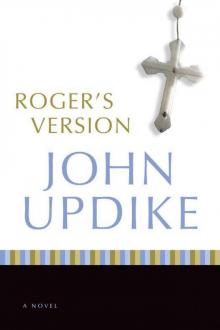 Roger's Version: A Novel
Roger's Version: A Novel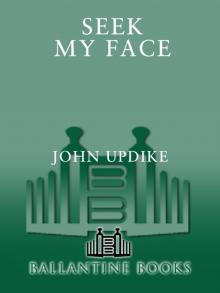 Seek My Face
Seek My Face The Carpentered Hen
The Carpentered Hen Pigeon Feathers: And Other Stories
Pigeon Feathers: And Other Stories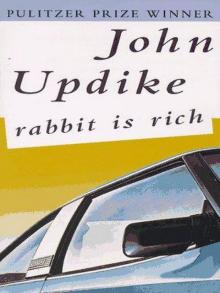 Rabbit Is Rich
Rabbit Is Rich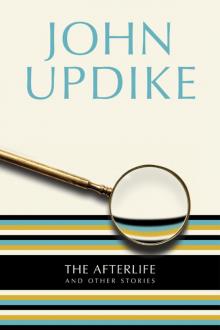 The Afterlife: And Other Stories
The Afterlife: And Other Stories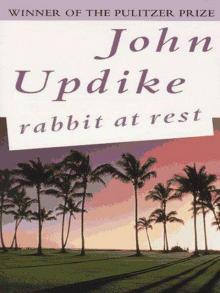 Rabbit at Rest
Rabbit at Rest The Witches of Eastwick
The Witches of Eastwick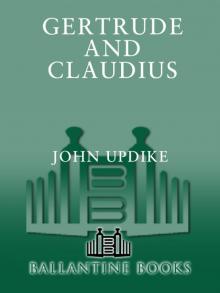 Gertrude and Claudius
Gertrude and Claudius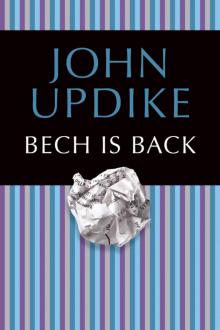 Bech Is Back
Bech Is Back Hub Fans Bid Kid Adieu: John Updike on Ted Williams
Hub Fans Bid Kid Adieu: John Updike on Ted Williams Marry Me: A Romance
Marry Me: A Romance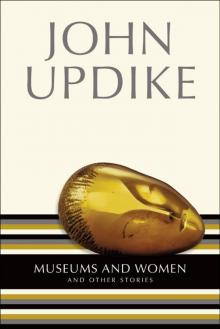 Museums and Women: And Other Stories
Museums and Women: And Other Stories My Father's Tears and Other Stories
My Father's Tears and Other Stories Collected Poems, 1953-1993
Collected Poems, 1953-1993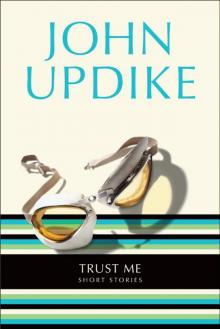 Trust Me: Short Stories
Trust Me: Short Stories Odd Jobs: Essays and Criticism
Odd Jobs: Essays and Criticism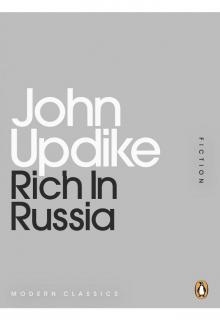 Rich in Russia
Rich in Russia Higher Gossip: Essays and Criticism
Higher Gossip: Essays and Criticism The Widows of Eastwick
The Widows of Eastwick In the Beauty of the Lilies
In the Beauty of the Lilies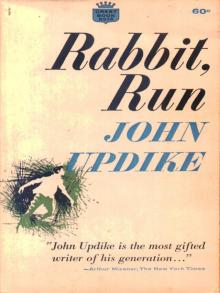 Rabbit, Run
Rabbit, Run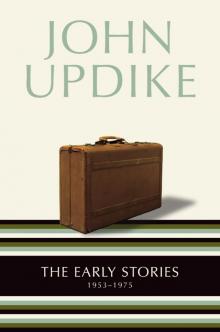 The Early Stories: 1953-1975
The Early Stories: 1953-1975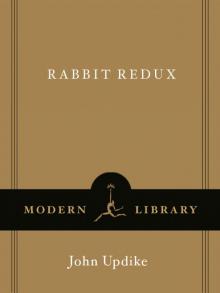 Rabbit Redux
Rabbit Redux S.
S. Brazil
Brazil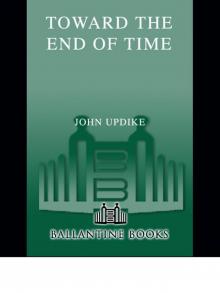 Toward the End of Time
Toward the End of Time The Centaur: A Novel
The Centaur: A Novel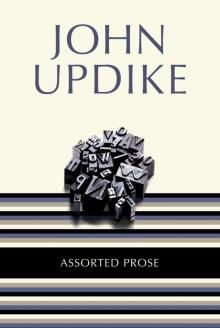 Assorted Prose
Assorted Prose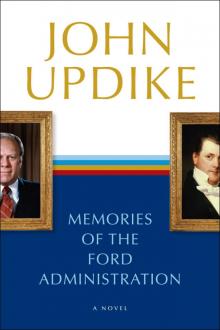 Memories of the Ford Administration
Memories of the Ford Administration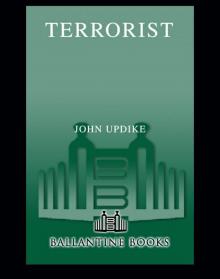 Terrorist
Terrorist Couples: A Novel
Couples: A Novel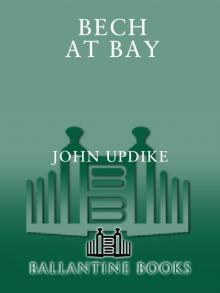 Bech at Bay
Bech at Bay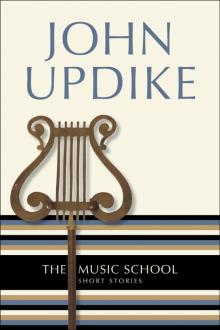 The Music School: Short Stories
The Music School: Short Stories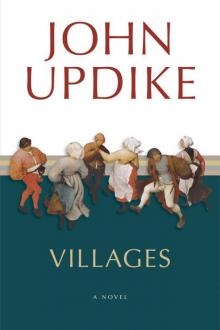 Villages
Villages S
S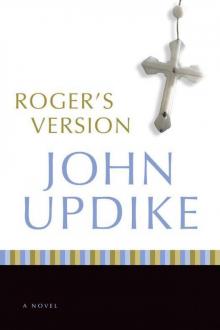 Roger's Version
Roger's Version Pigeon Feathers
Pigeon Feathers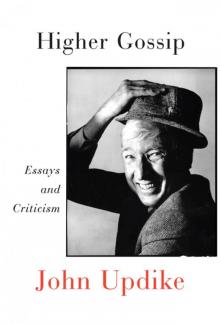 Higher Gossip
Higher Gossip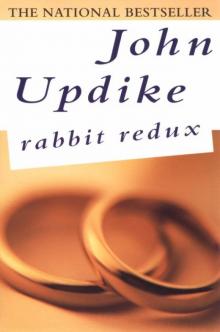 Rabbit Redux r-2
Rabbit Redux r-2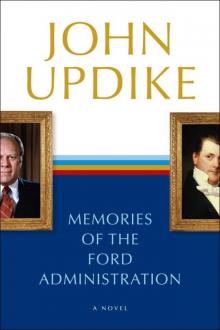 Memories of the Ford Administration: A Novel
Memories of the Ford Administration: A Novel The Centaur
The Centaur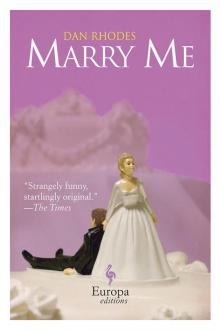 Marry Me
Marry Me Picked-Up Pieces
Picked-Up Pieces Bech
Bech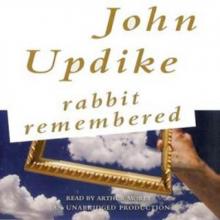 Rabbit Remembered
Rabbit Remembered Trust Me
Trust Me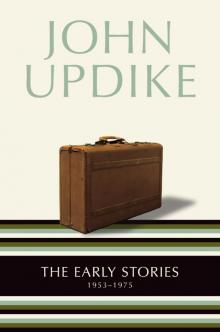 The Early Stories
The Early Stories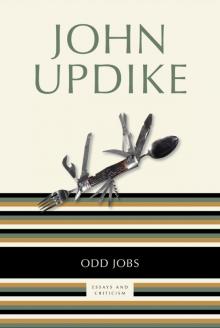 Odd Jobs
Odd Jobs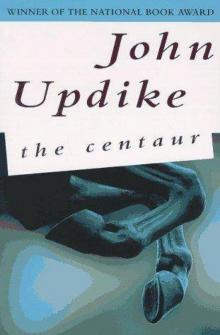 The Centaurus
The Centaurus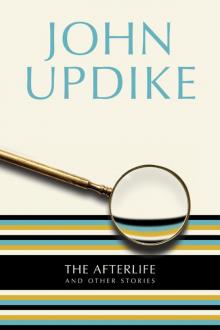 The Afterlife
The Afterlife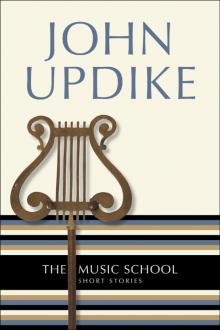 The Music School
The Music School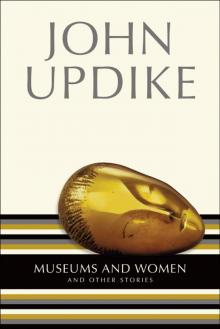 Museums and Women
Museums and Women Couples
Couples